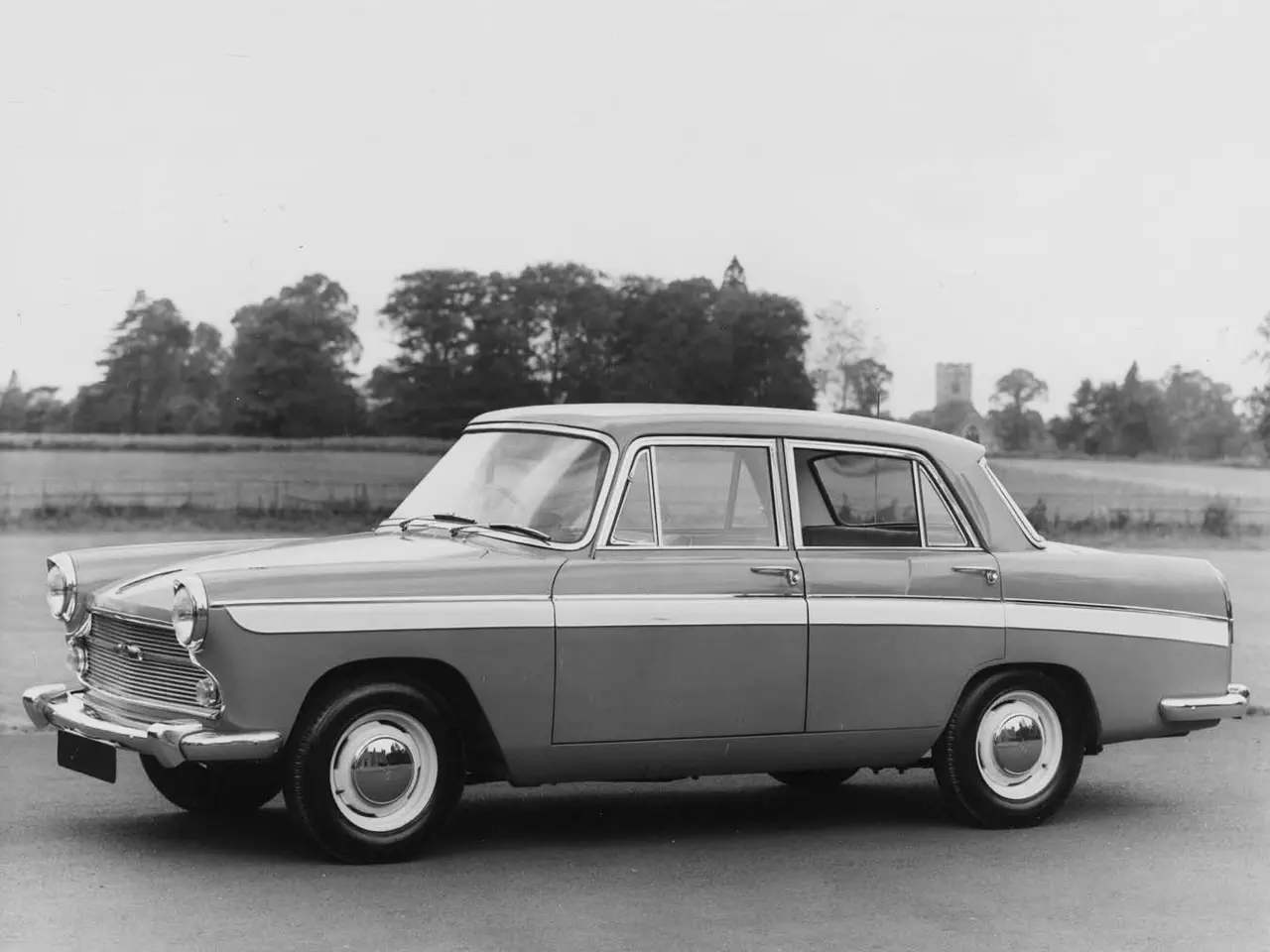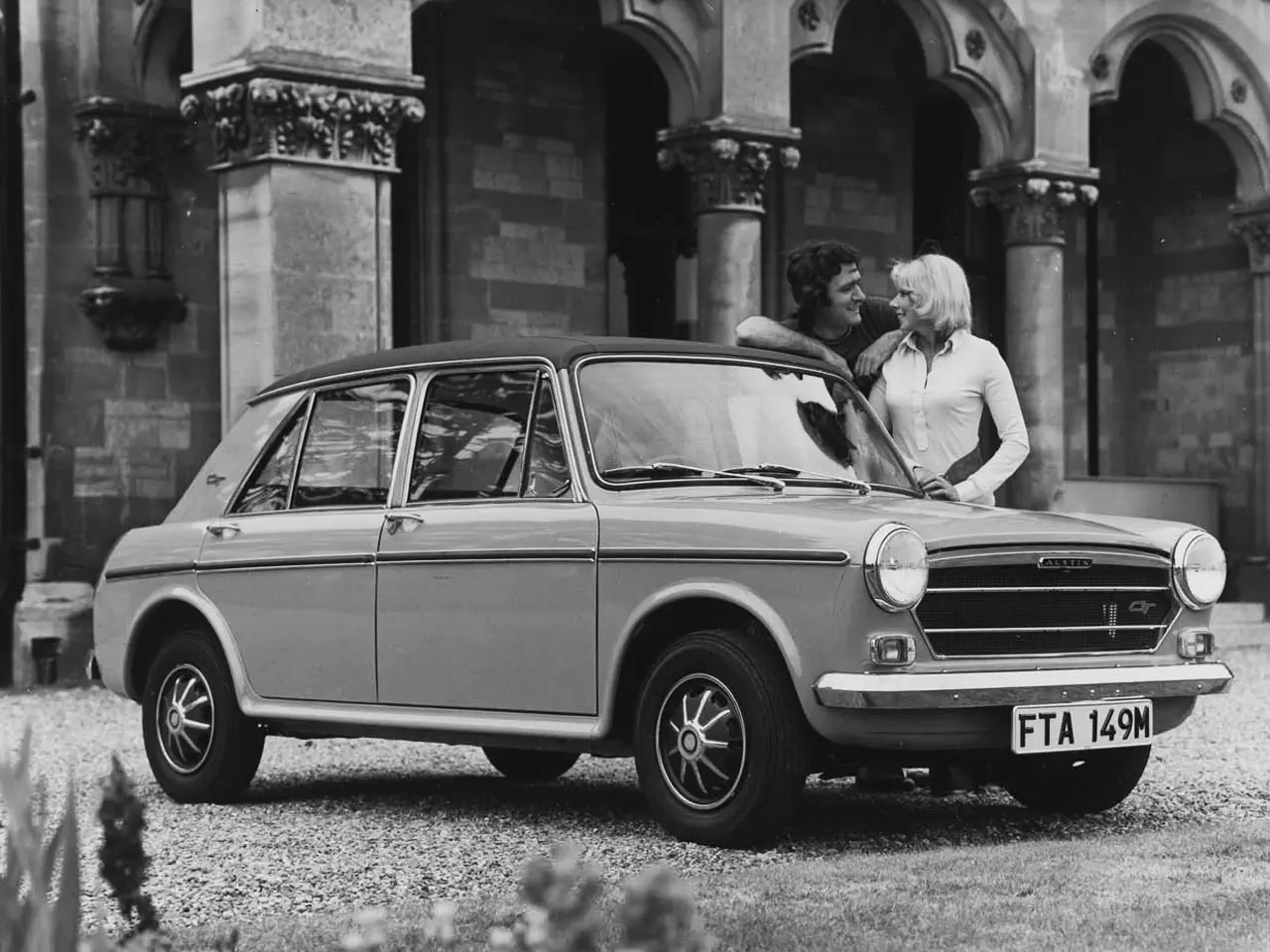Austin: The Sensible Heart of Britain

Some car companies sold dreams. They peddled glamour, speed, and that intoxicating promise that life might become more exciting if you just bought their car. Austin sold you a car. That's it. For most of its existence, buying an Austin was less an emotional purchase and more a pragmatic, civic-minded decision, like buying a postbox or a cast-iron drain cover. An Austin was a tool for living, a durable piece of national infrastructure that happened to have four wheels. It was the practical brown shoe of the British motor industry, and while it was rarely, if ever, exciting, it was Britain for decades. Every street, every village, every respectable driveway.
The man behind this empire of pragmatism was Herbert Austin, a farmer's son with the engineering talent of a genius and the temperament of a particularly stubborn badger. The row with his bosses at Wolseley ended with Austin walking out, not dramatically, but with the quiet certainty of a man who knew he was right and didn't need their approval to prove it. He found a derelict factory in Longbridge in 1905 and set about proving it anyway. His first cars were big, expensive, and aimed at the sort of people who had staff to polish the silver and wouldn't dream of doing anything so vulgar as checking the oil themselves. But it was the First World War that made him an industrial titan. The Longbridge plant became a city-state dedicated to the war effort, producing artillery shells by the million, trucks by the thousand, and enough aircraft to make Birmingham's skies look like a military parade ground. And after the war, this colossal capacity nearly sank him.
The Miracle of the Billiard Room
By 1921, with the post-war market for big, expensive cars having completely evaporated, Austin was bust. The receivers were in, and a lesser man would have thrown in the towel. Herbert Austin, however, retreated to the billiard room of his house and, in an act of sheer defiant genius, designed a car that would save not just his company, but the very idea of a British car industry. Working largely alone, filling sheet after sheet with sketches and calculations, he created what he called a "big car in miniature," a proper four-cylinder vehicle so tiny and simple that an ordinary family could actually afford one. He created the Austin Seven.
Launched in 1922, the "Baby Austin" was a social revolution. It was a proper car, not one of the terrifying, chain-driven cyclecars that usually killed their occupants. It was a mechanical cockroach, so tough and so simple that it almost single-handedly wiped out the competition. Barely bigger than a motorcycle with weather protection, it could seat four adults if they were friendly, and it cost about the same as three months' wages for a skilled tradesman. More importantly, it was licensed all over the world. The very first BMW was a badge-engineered Austin Seven. The first Datsuns were based on it. It was the car that put Britain on wheels, and it became the launchpad for a generation of racers, from Colin Chapman to Bruce McLaren, who learned their craft by tuning the hell out of these little machines.
An Empire of Sensible Boxes
The Seven's success built Longbridge into Fortress Austin. For the next thirty years, it churned out a relentless procession of deeply sensible motor cars: the Twelve, the Sixteen, the A40 Devon, the A70 Hereford. These were machines built with the design flair of a filing cabinet. Take the A40 Devon, launched in 1947. It was shaped like a loaf of bread on wheels, powered by an engine that wheezed out all of 40 horsepower, and trimmed inside with materials that suggested someone had raided a particularly dreary office supply catalogue. Motor magazine tested one and noted, with admirable restraint, that "it proceeds with adequate determination but without notable enthusiasm." The buying public loved it. More than a quarter of a million were sold, mostly to bank managers, provincial solicitors, and people who wore hats indoors. They were sturdy, they were dependable, and they were purchased by people who valued reliability far more than something as frivolous as "fun." The Austin ethos was clear: we build the cars your bank manager approves of.
This created a fierce rivalry with the slightly more spivvy offerings from Morris. Where Austin represented solid respectability, Morris had a whiff of the entrepreneur about it, cars for men who'd made their money rather than inherited it. The government, in its infinite wisdom, decided these two giants should be friends and forced them into a corporate marriage in 1952 called the British Motor Corporation (BMC). The marriage was a disaster, like forcing two warring pub landlords to share a cellar. The result was years of bitter infighting, duplicated models, and immense waste. Out of this corporate car crash, however, emerged one last miracle.
The Classless Wonder from a Chaotic Marriage
Faced with the 1956 Suez Crisis and the need for a tiny, fuel-efficient car, BMC turned to Alec Issigonis. Issigonis, working with a small team, produced the most extraordinary piece of automotive packaging in history: the Mini. Launched in 1959 as both an Austin Seven and a Morris Mini-Minor, it was a masterpiece of spatial engineering, cramming a proper four-seater into a space barely bigger than a packing crate. With its transverse engine and wheels-at-each-corner stance, it was a classless icon that was adored by everyone from film stars to district nurses.
This was Austin achieving something it had never managed before: making people want the car, not just need it. The sensible brown shoe had suddenly become rather fashionable. Following it up with the fantastically popular Austin 1100/1300 range, which applied the same packaging to a slightly larger car, it seemed for a brief, glorious moment that Austin's engineering could lead the world. Perhaps pragmatism and excitement weren't mutually exclusive after all.
The Long, Slow Rot
It didn’t last. The chaos of BMC was superseded by the even greater shambles of British Leyland in 1968. From here on, the story of Austin is a long, slow, painful decline. Longbridge became a hotbed of industrial action, and the cars became punchlines. The 1973 Austin Allegro is perhaps the ultimate symbol of the malaise. A frumpy, dumpy-looking thing, it was infamous for its "Quartic" square steering wheel, the doors that didn't fit properly, the windows that fell out of their runners, and panel gaps you could post letters through. Build quality suggested the cars had been assembled by people who actively disliked cars and wanted to punish anyone foolish enough to buy one. Then came the Princess, a dramatic wedge-shaped saloon that was genuinely forward-thinking in its design, but hopelessly underdeveloped and prone to breaking down if you looked at it funny.
The Mercy Killing
By the 1980s, the Austin brand was a shadow of its former self, a badge stuck on the front of cars born from compromise and committee meetings. The Austin Metro, launched in 1980, was a genuinely good little car that sold in droves and staved off the executioner's axe for a few years. Its successors, the Maestro and Montego, were perfectly adequate family cars launched into a market that now demanded Japanese reliability, German refinement, or Italian style. Adequate wasn't adequate anymore.
Finally, in 1987, the management of what was then the Rover Group decided to put the name out of its misery. The Austin badge, once a symbol of dependability and pride, was now too associated with rust and strikes. It was quietly dropped. It was a mercy killing. The company that had built Britain's first car for the people, that had armed the nation for war, and that had given the world the Mini, simply ceased to be.
A Legacy of Dependability
Looking back, Austin never made your heart race. It built solid, worthy, and often crushingly dull motor cars. But that was its purpose. It was a public utility. An Austin was the car that started every morning, that took you to work, that carried your family, that sat outside your house like a faithful, slightly boring dog. A postbox doesn't make your heart race either, but try living without one. Austin was that kind of essential. It was the quiet machinery of ordinary freedom, and millions of people lived better lives because of it. And there is nothing boring about that.













